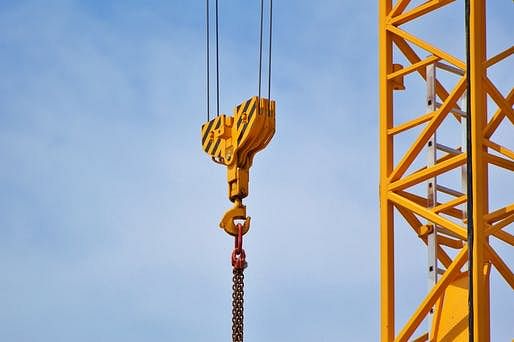
Autodesk has published its 2021 Construction Outlook, aimed at uncovering the evolving state of the industry for the year ahead. As major economies begin to emerge from the COVID-19 pandemic, the report sets out the risks and opportunities to be addressed by those in design and construction across the United States.
Speaking to Forbes about the report, Autodesk Senior VP and General Manager Jim Lynch struck an optimistic note. “The big takeaway is that the market is back,” he says. Increased bidding activity shows that the sector is emerging from the pandemic quicker than expected, with a 36% year-on-year increase in bidding activity in January 2021 representing an all-time-high for Autodesk’s BuildingConnected platform. 2021 is also expected to see a rebound in construction commencements, with growth expected in commercial, healthcare, and transportation sectors.
The report, available to download for free here, analyses the year ahead through five lenses: growth, health & safety, labor, supply chains, and design.
In the Growth section, Autodesk lists the non-residential sectors expected to see the largest year-on-year growth in 2021; healthcare (9.6%), office buildings (7.4%), and commercial construction (6.6%). While there is early sign for optimism, the report points out that peak spending for non-residential projects typically occurs within 12-18 months of the project beginning on-site, meaning the 24% drop in new starts in 2020 will still loom over the industry through 2021. Meanwhile, new starts in residential construction for the final 5 months of 2020 saw 4 of the 5 highest monthly totals since 2004-2006, finishing the year at a 15-year high, and pointing to promising signs of further growth in 2021.
The Health & Safety section details how the COVID-19 pandemic impacted construction welfare on-site. A survey by Autodesk of 1000 preconstruction professionals in June 2020 found that 58% of respondents had at least 10% of their projects halted, while 23.7% saw over half of their projects halted, after governments shut construction sites to draft health and safety guidelines for workers. The report stresses the need for proper PPE, training, and education for construction workers, stating that nearly 60% of construction workers are at a higher risk of severe illness from COVID-19 due to age, medical conditions, or other risk factors. The report also links to useful resources for maintaining health and safety on construction sites as the pandemic bleeds into 2021.
The Labor section outlines the impact of COVID-19 on the supply and demand of labor within the industry. Counterintuitively, Autodesk found that 50% of surveyed contractor firms reported no change in headcount during the pandemic, with 23% adding employees. While 81% of firms report difficulty finding project managers or supervisors, only 2% of firms are struggling to recruit architects – the lowest ranking on the list.
The Supply Chain section details the impact of COVID-19 on the flow of construction materials. The report points to a survey that found over 75% of contractors were more concerned about the supply chain and material delivery impacts of COVID-19, while a separate survey found 95% of respondents reported disruption to material supply. The report expects these impacts to be felt in the industry for the next 18-24 months. The cost of certain materials has also increased dramatically during the pandemic, with a 45% increase in the price of lumber and plywood, and a 3% increase in concrete materials. The increase in timber prices has added more than $17,000 to the price of an average new single-family home over the past 12 months.

The final section, Design, stresses the importance of avoiding RFIs (requests for further information). Autodesk’s research found a direct correlation between a project’s profit success, and the rate at which a team closed out critical RFIs. The report also draws a link between RFIs and coordination problems, with unsuccessful projects having 50% more RFIs with a root cause of coordination problems than successful projects. Autodesk point to design reviews as a safeguard, noting that more than 70% of the RFIs they observed could have been solved in a design review.
The full report is available to download and read for free on Autodesk’s website here.
1 Comment
Maybe it's just me but my workload has been consistently overwhelming since the pandemic hit. And we all know that constrcution materials costs are skyrocketing unsustainably - though I doubt labor costs have been rising commensurately.
Block this user
Are you sure you want to block this user and hide all related comments throughout the site?
Archinect
This is your first comment on Archinect. Your comment will be visible once approved.